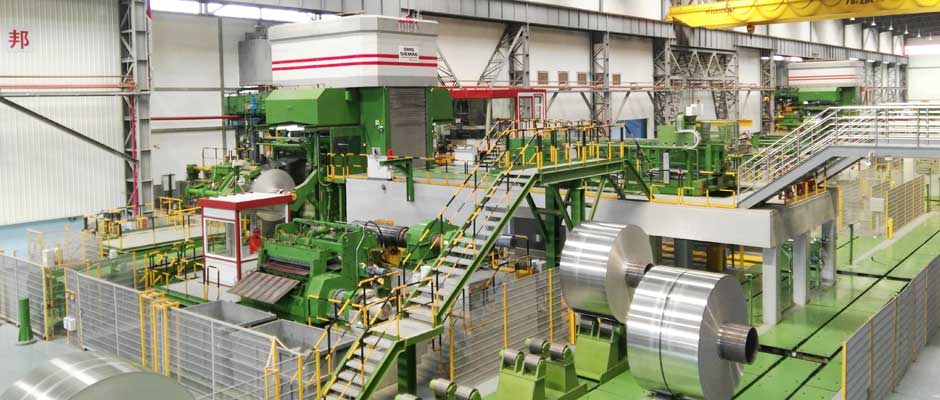Aluminium sheets for traffic signs manufacturing are typically lightweight, corrosion-resistant, and easy to process. The widespread use of aluminum sheets in traffic sign production ensures the safety and durability of the signs, providing reliable support for traffic management.

Common materials of aluminium sheets for traffic signs:
– 1000 series aluminum sheets:
Such as 1050, 1060, and 1100, with an aluminum content exceeding 99.0%, possessing good ductility and processability, lightweight, and low cost, suitable for producing economical traffic signs in areas with favorable climates.
Containing manganese, their corrosion resistance and oxidation resistance are better than pure aluminum, and their strength is also higher. They are often used in roads with high quality requirements, such as coastal areas or environments with strong winds.
Possessing excellent strength, corrosion resistance, wear resistance, and thermal conductivity, suitable for long-term outdoor use, especially in areas with complex climates and strong winds. For example, the 5052 H38 aluminum sheet commonly used in the United States remains stable and does not deform even in strong winds and heavy rain.
Specifications of aluminum sheets for traffic signs:
– Thickness:
Common thicknesses include 1.0mm, 1.5mm, 2.0mm, 2.5mm, and 3.0mm. For large signboards (area ≥ 9㎡), the thickness should be no less than 3mm. For small signboards, thinner aluminum sheets, such as 1.5mm or 2.0mm, can be selected depending on the specific requirements.
– Shape and dimensions:
Triangular signboards have side lengths of 700mm, 900mm, and 1100mm; round signboards have diameters of 600mm, 800mm, and 1000mm; square signboards commonly come in sizes of 3000×1500mm, 3000×2000mm, and 4000×2000mm.
Features of aluminium sheets for traffic signs:
– Corrosion resistance:
Aluminum has excellent oxidation resistance, remaining stable under various climatic conditions and not easily rusting.
– Lightweight:
Aluminum sheets are relatively lightweight, facilitating transportation and installation.
– High strength:
Aluminum sheets have good strength, able to withstand the effects of wind and other external forces.
– Easy to process:
Aluminum sheets can be easily cut, stamped, and bent, making them suitable for creating traffic signs of various shapes.
– Surface treatment:
Aluminum sheets can undergo surface treatments such as anodizing and electrophoretic coating to improve durability and visual appeal, ensuring the signs remain clearly visible for extended periods in outdoor environments.
Aluminum sheets for traffic signs production must meet a range of quality requirements to ensure their performance and durability under various environmental conditions. Some key quality requirements are as follows:
– Material:
High-quality aluminum alloy materials (such as 3003, 5052, etc.) with good strength and corrosion resistance should be used.
– Thickness:
The thickness of the aluminum sheet is typically between 1.0mm and 3.0mm, depending on the type of sign and the environment in which it will be used. The thickness should be uniform, avoiding localized weaknesses.
– Surface treatment:
The surface should be smooth and free of obvious scratches, dents, or other defects.
Anodizing or coating treatments should be used to improve weather resistance and corrosion resistance.
The reflective layer should be uniform and conform to relevant standards to ensure visibility at night or in low-light conditions.
– Mechanical properties:
It should possess good tensile and yield strength to ensure it is not easily deformed or broken under wind and other external forces.
– Weather resistance:
It should be able to withstand harsh weather conditions such as high and low temperatures, humidity, and ultraviolet radiation to ensure the long-term use of the sign.
– Dimensional accuracy:
The dimensions of the sign should meet design requirements to ensure accurate installation.
– Standard compliance:
It should comply with relevant national or regional traffic sign standards and specifications (such as the US “Traffic Sign Manual,” etc.).
– Weight:
It should be controlled within a reasonable range to facilitate transportation and installation while ensuring stability under wind.
– Environmental protection:
Aluminum signage materials should meet environmental standards, avoiding the use of harmful substances and ensuring environmental friendliness.
Contact Us
- 1103, No.14 Waihuan Road, CBD,Zhengzhou, China
- +86-0371-65621391
- nydia@aluminumhm.com
- Contact Form

